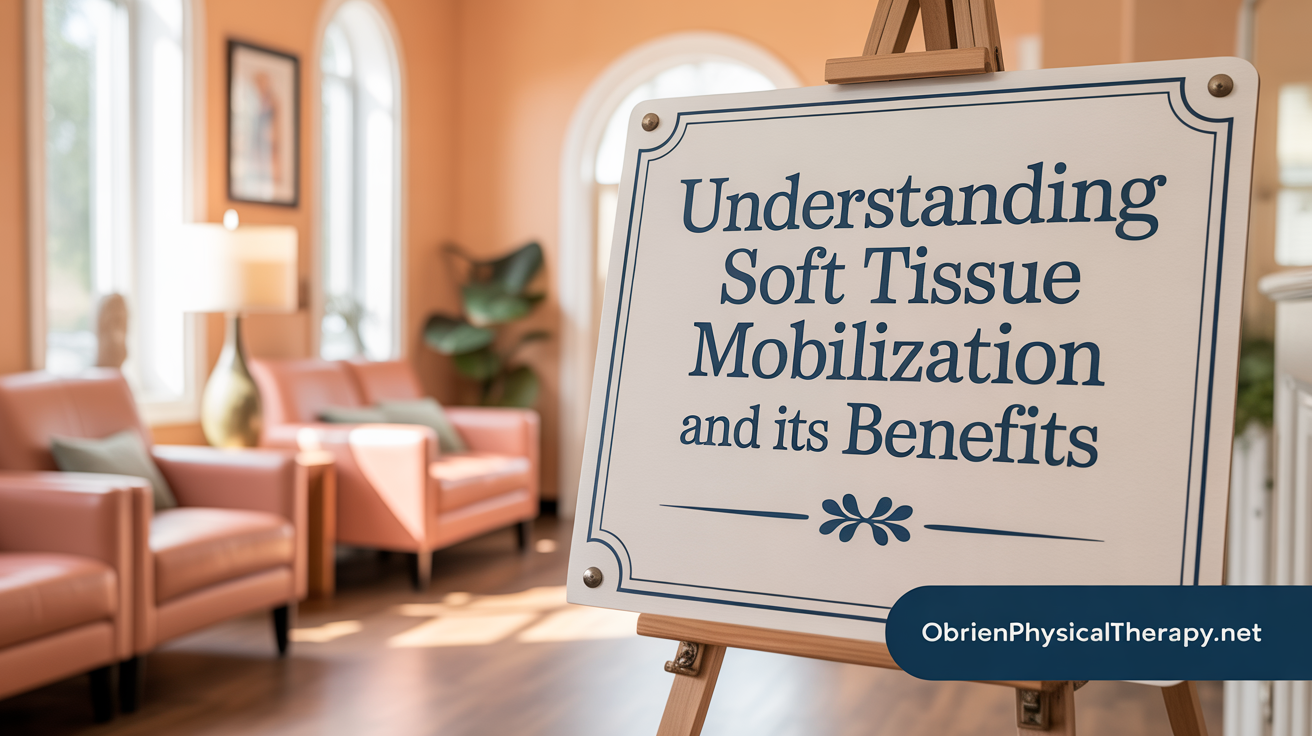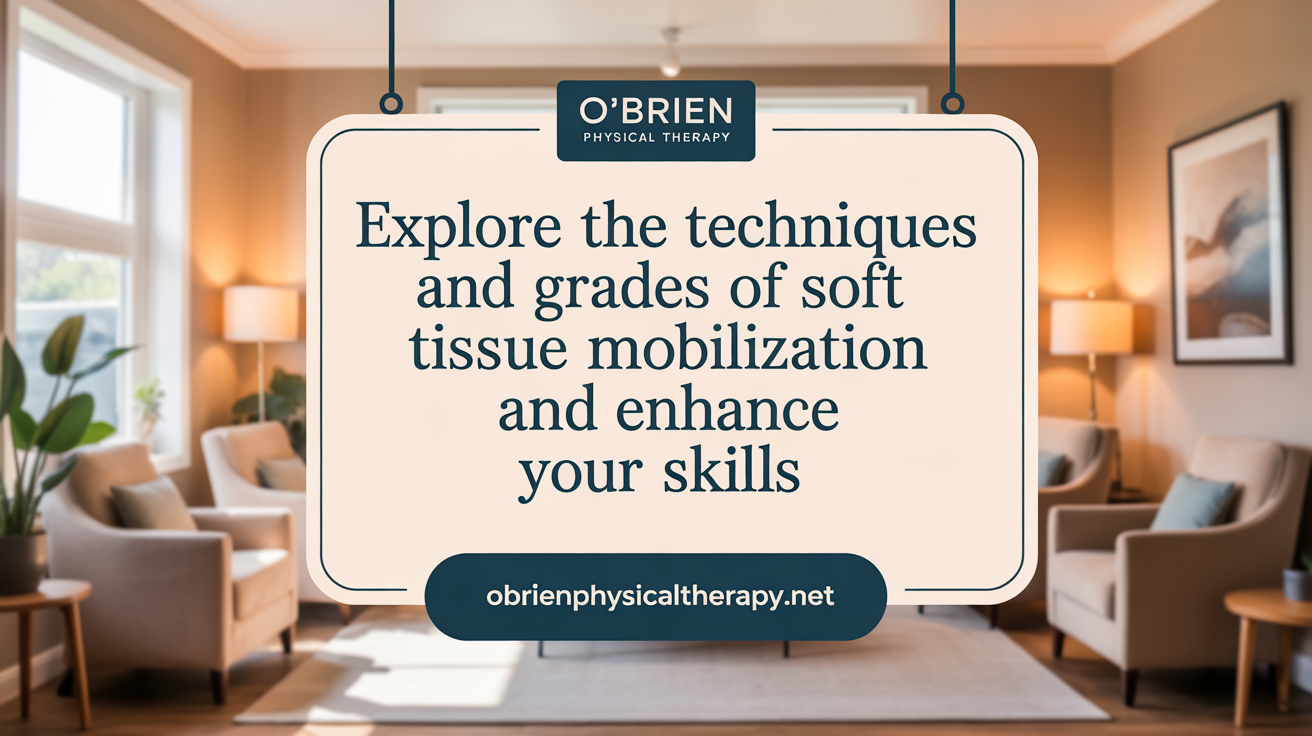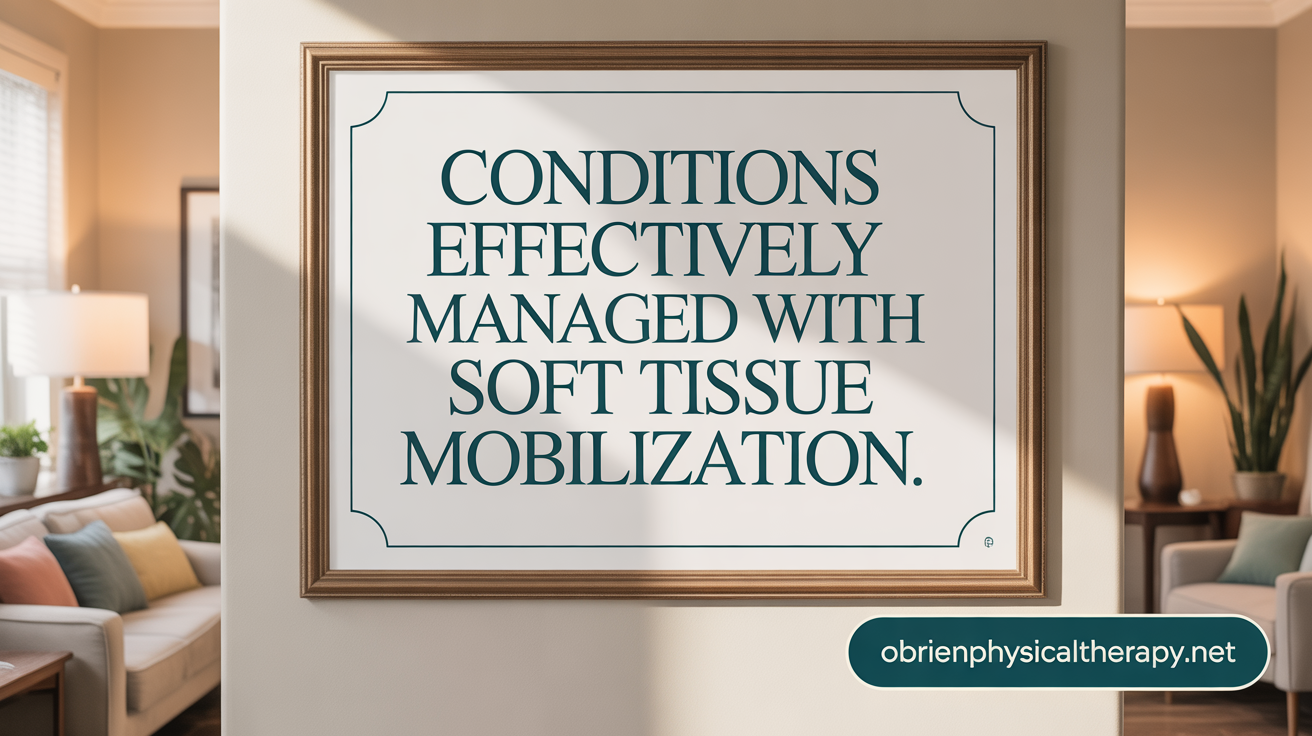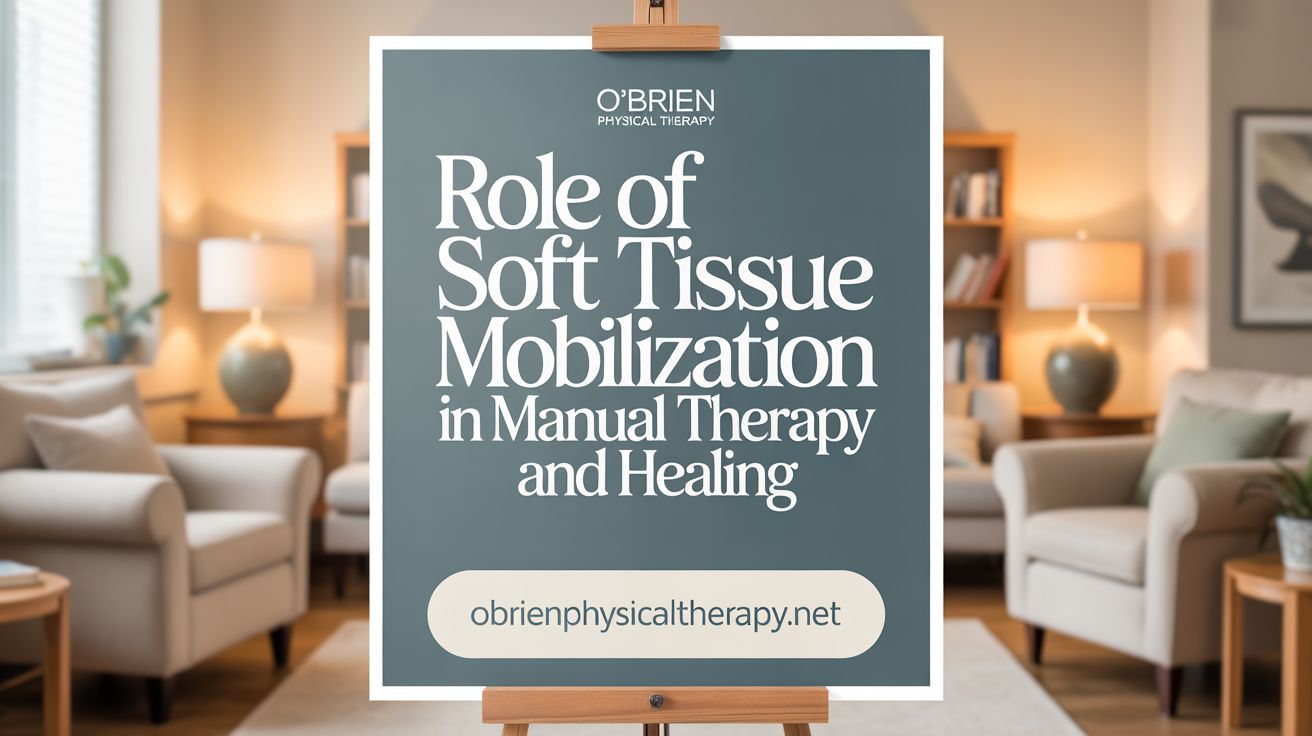An Overview of Soft Tissue Mobilization
Soft tissue mobilization (STM) is a specialized manual therapy technique widely utilized in physical therapy to enhance recovery and improve function of muscles, tendons, ligaments, and fascia. This article provides a comprehensive understanding of STM, exploring its definition, techniques, physiological benefits, applicable conditions, and its critical role within manual therapy and rehabilitative practices. Readers will gain insights into the treatment process, the science behind soft tissue healing, and advanced methods such as Instrument-Assisted Soft Tissue Mobilization (IASTM).
Defining Soft Tissue Mobilization and Its Core Objectives

What is soft tissue mobilization and how is it defined?
Soft tissue mobilization (STM) is a manual therapy technique performed by trained healthcare professionals, typically physical therapists. It involves hands-on manipulation and assessment of soft tissues such as muscles, tendons, fascia, and ligaments. The aim is to improve the mobility and function of these tissues by breaking down adhesions, scar tissue, and restrictions.
Therapists use various techniques, including gentle pressure, stretching, and massage. In addition, instrument-assisted methods like Instrument-Assisted Soft Tissue Mobilization (IASTM) utilize specialized tools—often made of stainless steel or other materials—to target deeper or more specific tissue layers. These tools help therapists detect and treat restrictions, adhesions, and fibrosis more precisely.
The physiological effects of STM include increasing blood flow, stimulating collagen remodeling, and enhancing neural input, which all support healing processes. The overall goal is to restore tissue flexibility, reduce pain, decrease swelling, and accelerate recovery, ultimately improving the patient's musculoskeletal health and function.
Primary goals and tissues targeted by STM
Soft tissue mobilization aims to relax tense muscles, reduce scar tissue formation, and stretch fascia and tendons. This process helps address common soft tissue injuries like tendinitis, sprains, strains, bursitis, and post-surgical scars.
The tissues most often targeted include:
- Muscles
- Tendons
- Fascia
- Ligaments
- Sometimes cartilage and other connective tissues
By focusing on these structures, STM helps restore normal tissue tension, promote circulation, and improve movement. It is useful in managing both acute injuries and chronic conditions, aiding in pain relief, improving range of motion, and preventing further injury. When combined with other therapies such as exercises and lifestyle modifications, soft tissue mobilization effectively supports overall musculoskeletal health.
Techniques, Methods, and Grades of Soft Tissue Mobilization

What techniques and methods are used in soft tissue mobilization?
Soft tissue mobilization (STM) encompasses a variety of manual and instrument-assisted techniques designed to improve tissue health, reduce pain, and enhance movement. Manual approaches include myofascial release, where gentle sustained pressure helps relax fascia and muscles; cross-friction massage, which breaks down scar tissue and adhesions; trigger point therapy targeting painful muscle knots; and deep tissue massage aimed at reaching deeper layers. These techniques focus on relaxing muscles, breaking down restrictive scar tissue, and promoting better blood flow.
In addition to hands-on methods, specialized tools such as those used in the Graston Technique and ASTYM are common. These involve stainless steel or plastic instruments that the therapist glides over the skin to detect and treat areas of tightness, scar tissue, or adhesions. Instrument-assisted techniques help break down fascial restrictions and facilitate tissue regeneration.
Other modalities include manual lymphatic drainage, which enhances circulation and reduces swelling, and manual traction or stretching to decompress joints or elongate tissues. These approaches are performed by trained physical therapists and are often combined with stretching exercises or strengthening programs to optimize healing and restore function.
What are the grades of soft tissue mobilization and their applications?
Soft tissue mobilization techniques are classified according to their depth, amplitude, and intended therapeutic effect. The grading system ranges from superficial to deep interventions.
- Grade I and II mobilizations involve gentle, low-amplitude movements aimed at reducing pain and stiffness. They are often used in early stages of treatment when tissue sensitivity is high.
- Grade III and IV involve more forceful and deeper manipulation, focusing on increasing tissue elasticity, breaking down adhesions, and improving joint ranges of motion. These are suitable for chronic restrictions or when significant scar tissue needs addressing.
Instruments like those used in IASTM (Instrument-Assisted Soft Tissue Mobilization) and devices like those in the Graston Technique are primarily designed for deeper, targeted treatment. They assist clinicians in effectively treating scar tissue, fascia restrictions, and inflammations.
The choice of grade depends on the tissue condition and patient response. Superficial techniques prioritize pain relief and comfort, suitable for sensitive tissues. Deeper techniques are reserved for chronic issues or significant restrictions, aiming for structural changes. Conditions commonly treated across these grades include tendinitis, joint restrictions, post-surgical scars, and sports injuries, all aiming to restore mobility, reduce pain, and accelerate healing.
Physiological Mechanisms and Clinical Benefits of Soft Tissue Mobilization

What are the benefits and physiological mechanisms of soft tissue mobilization?
Soft tissue mobilization (STM) provides a range of advantages for individuals suffering from muscle, ligament, or fascia injuries. Its main benefits include pain reduction, improved movement, increased flexibility, and accelerated tissue healing. These outcomes stem from the way STM influences the body's physiological processes.
During treatment, STM enhances blood flow to the affected areas, delivering vital oxygen and nutrients necessary for healing. It stimulates the activity of fibroblasts, the cells responsible for collagen production, which is essential for repairing damaged tissues. Additionally, STM promotes the realignment and remodeling of collagen fibers within scar tissue, leading to more normal tissue structure.
Techniques like instrument-assisted soft tissue mobilization (IASTM) and the widely used Graston Technique utilize controlled microtrauma, which intentionally causes minor tissue injury. This microtrauma triggers an inflammatory response, initiating the body's natural healing mechanisms to break down fibrous scar tissue and adhesions. These processes help restore tissue elasticity and function.
Furthermore, STM relaxes tense muscles and reduces tension around joints, easing movement restrictions. The neurophysiological effects include the stimulation of nerve receptors, which can decrease the sensation of pain, and the release of endorphins, natural pain relievers. These combined biomechanical and neurophysiological effects support faster recovery, improved mobility, and greater overall soft tissue health.
In summary, soft tissue mobilization employs biomechanical manipulation and controlled microtrauma to stimulate healing, improve circulation, and relax the musculoskeletal structures. This not only alleviates pain but also enhances flexibility and restores normal tissue function, making it an effective therapy for both acute injuries and chronic conditions.
Medical Conditions Treated with Soft Tissue Mobilization

Which conditions and injuries can be treated with soft tissue mobilization?
Soft tissue mobilization (STM) is highly effective in treating an array of musculoskeletal conditions involving the muscles, tendons, ligaments, and fascia. It is commonly used for muscle strains, ligament sprains, tendinitis, bursitis, and scar tissue adhesions that result from injury or surgery.
This therapy also addresses chronic conditions such as frozen shoulder, carpal tunnel syndrome, and shoulder impingement, providing relief and improving movement. Back and neck pain are frequently managed with STM because it helps reduce muscle tension and facilitate tissue healing.
In addition, soft tissue mobilization can treat joint and limb injuries like hip, knee, and ankle sprains, often associated with repetitive strain or overuse. Conditions such as plantar fasciitis, IT band syndrome, and stress injuries respond well to this manual therapy, aiding in pain reduction and restoring functional mobility.
By promoting blood flow and breaking down scar tissue or adhesions, STM accelerates healing and offers both immediate and long-lasting benefits. Its application is suitable for a wide collection of patients, including athletes recovering from sports injuries, post-operative individuals, and those with chronic soft tissue discomfort.
Overall, soft tissue mobilization plays a vital role in managing injuries, reducing inflammation, and restoring full function, helping patients return to their daily activities with less pain and better movement.
Soft Tissue Mobilization Within Manual Therapy and Its Healing Process

What is the role of soft tissue mobilization within manual therapy and physiotherapy?
Soft tissue mobilization (STM) is an essential component of manual therapy and physiotherapy aimed at improving the health and function of muscles, fascia, tendons, and ligaments. It involves hands-on techniques such as stretching, deep pressure, friction massage, and instrumental methods like the Graston Technique, which help break down scar tissue, adhesions, and fascia restrictions.
By enhancing tissue pliability, STM promotes better circulation, facilitating the delivery of nutrients and oxygen to injured areas. This process accelerates healing, reduces inflammation, and alleviates pain. STM also helps restore range of motion and movement functionality, making it an effective conservative treatment option for various injuries like sprains, strains, tendinitis, and post-surgical adhesions.
In clinical practice, physical therapists use thorough assessments to develop personalized treatment plans. These plans often combine STM with other manual techniques and exercises to support long-term recovery and prevent future tissue restrictions.
What are the three stages of the soft tissue healing process relevant to soft tissue mobilization?
Understanding the soft tissue healing phases is vital for timing and applying effective STM techniques. The process consists of three key stages:
- Inflammatory Phase (Day 1 to 7): Begins with injury, characterized by swelling, redness, and pain. It involves vasodilation and cellular cleanup to remove damaged tissue.
- Proliferative Phase (Week 1 to several weeks): During this period, fibroblasts generate new collagen, forming granulation tissue. New blood vessels develop, supporting tissue regeneration.
- Remodeling Phase (Weeks to months or even years): The collagen fibers realign along the lines of stress, gaining strength and flexibility. This phase is crucial for restoring full tissue function.
Applying STM appropriately during these phases can optimize healing, minimize re-injury risk, and promote tissue resilience.
How does soft tissue mobilization compare to massage therapy?
While both soft tissue mobilization and massage therapy involve manipulating soft tissues, their objectives and methods differ. Massage therapy generally aims to relax muscles, reduce stress, and alleviate tension through gentle rubbing, kneading, and stroking techniques.
In contrast, soft tissue mobilization—performed by trained health professionals—targets specific tissue restrictions such as adhesions or scar tissue. It utilizes techniques like Instrument Assisted Soft Tissue Mobilization (IASTM), cupping, trigger point therapy, and specialized manual methods to stimulate tissue remodeling and restore mobility.
Therefore, while massage emphasizes relaxation and stress relief, STM is more focused on functional recovery, addressing underlying tissue constraints to improve movement and reduce pain.
| Aspect | Massage Therapy | Soft Tissue Mobilization | Main Purpose |
|---|---|---|---|
| Technique Focus | Relaxation, tension relief | Tissue restriction release | Functional health and recovery |
| Practitioner | Massage therapist | Physiotherapist or trained clinician | Clinical improvement |
| Application | Rubbing, kneading | Targeted pressure, friction, instrument-assisted | Restore tissue elasticity and function |
| Goals | Reduce stress, promote relaxation | Break down scar tissue, improve range of motion | Enhance mobility and speed healing |
Applying the right approach depends on individual needs, injury type, and treatment goals, often making STM a valuable complement to general massage therapy.
More information
Explore the role of soft tissue mobilization in manual therapy and different healing phases to understand its significance in injury recovery, rehabilitation, and pain management.
The Integral Role of Soft Tissue Mobilization in Recovery and Wellness
Soft tissue mobilization stands as a cornerstone in manual therapy and physical rehabilitation, offering targeted interventions that facilitate the healing of muscles, tendons, ligaments, and fascia. Through a blend of hands-on and instrument-assisted techniques, STM addresses the underlying tissue restrictions causing pain and impaired movement, supporting improved range of motion and functional recovery. Understanding its physiological mechanisms and the phases of tissue healing enhances clinical effectiveness and patient outcomes. As part of a comprehensive treatment strategy, soft tissue mobilization complements exercise, lifestyle adaptations, and patient education to foster long-term musculoskeletal health and prevent re-injury. Engaging with trained healthcare professionals ensures safe, personalized care to maximize the benefits of this therapy.
References
- Soft Tissue Treatments - Techniques To Improve Mobility Near Me
- What Is Soft-Tissue Mobilization Therapy? - Healthline
- Instrument Assisted Soft Tissue Mobilization - Physiopedia
- Understanding Soft Tissue Manipulation in Manual Therapy
- Understanding IASTM: A Proven Technique for Soft Tissue Recovery
- Exploring the Benefits of Soft Tissue Mobilization for Back Pain
- Soft Tissue Mobilization | Redbud Physical Therapy
- Soft Tissue Mobilization in NJ | Northeast Spine and Sports Medicine
- All About Soft Tissue Mobilization - Island Sports Physical Therapy
- Instrument Assisted Soft Tissue Mobilization (IASTM) Near Me
